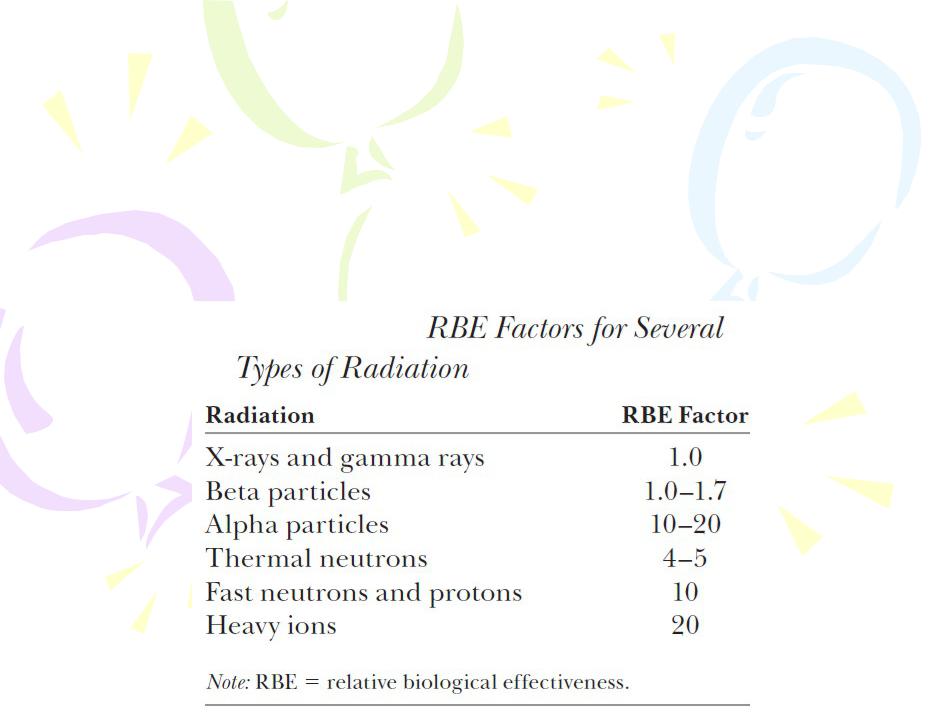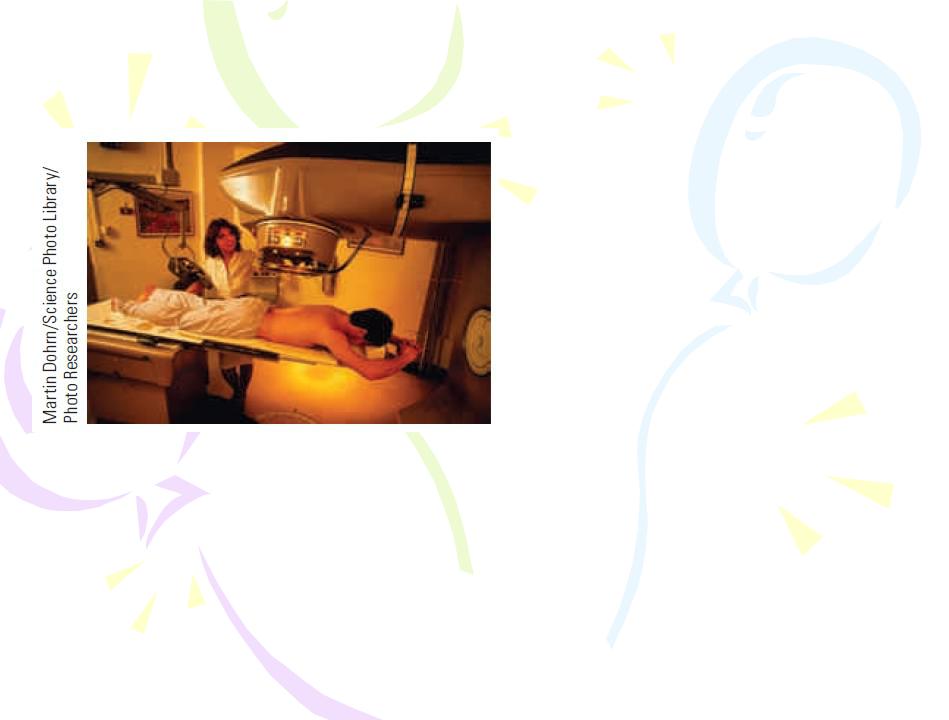
- •Course of lectures «Contemporary Physics: Part2»
- •Interactions Involving Neutrons
- •Interactions Involving Neutrons
- •Nuclear Fission
- •Nuclear Fission
- •Nuclear Fission
- •Nuclear Reactors
- •Nuclear Reactors
- •Nuclear Reactors
- •Nuclear Reactors
- •Nuclear Fusion
- •Nuclear Fusion
- •Nuclear Fusion
- •Nuclear Fusion
- •Nuclear Fusion
- •Nuclear Fusion
- •Nuclear Fusion
- •Nuclear Fusion
- •Nuclear Fusion
- •Nuclear Fusion
- •Nuclear Fusion
- •Nuclear Fusion
- •Radiation Detectors
- •Radiation Detectors
- •Radiation Detectors
- •Radiation Detectors
- •Uses of Radiation
- •Uses of Radiation
- •Uses of Radiation
- •Uses of Radiation

Nuclear Fusion
Advantages and Problems of Fusion
The RBE (relative biological effectiveness) factor for a given type of radiation is the number of rads of x-radiation or gamma radiation that produces the same biological damage as 1 rad of the radiation being used.

Nuclear Fusion
Advantages and Problems of Fusion
Low-level radiation from natural sources such as cosmic rays and radioactive rocks and soil delivers to each of us a dose of approximately 0.13 rem/yr. This radiation, called background radiation, varies with geography, with the main factors being altitude (exposure to cosmic rays) and geology (radon gas released by some rock formations, deposits of naturally radioactive minerals).

Radiation Detectors
Particles passing through matter interact with the matter in several ways. The particle can, for example, ionize atoms, scatter from atoms, or be absorbed by atoms. Radiation detectors exploit these interactions to allow a measurement of the particle’s energy, momentum, or charge and sometimes the very existence of the particle if it is otherwise difficult to detect. Various devices have been developed for detecting radiation. These devices are used for a variety of purposes, including medical diagnoses, radioactive dating measurements, measuring background radiation, and measuring the mass, energy, and momentum of particles created in high-energy nuclear reactions.

Radiation Detectors
A photographic emulsion is the simplest example of a detector.

Radiation Detectors
In an ion chamber, electron–ion pairs are generated as radiation passes through a gas and produces an electrical signal. Two plates in the chamber are connected to a voltage supply and thereby maintained at different electric potentials. The positive plate attracts the electrons, and the negative plate attracts positive ions, causing a current pulse that is proportional to the number of electron–ion pairs produced when a particle passes through the chamber. When an ion chamber is used both to detect the presence of a particle and to measure its energy, it is called a proportional counter.

Radiation Detectors
The Geiger counter is perhaps the most common form of ion chamber used to detect radioactivity. It can be considered the prototype of all counters that use the ionization of a medium as the basic detection process.

Uses of Radiation
Tracing
A tracer technique for determining the condition of the human circulatory system.

Uses of Radiation
Materials Analysis
For centuries, a standard method of identifying the elements in a sample of material has been chemical analysis, which involves determining how the material reacts with various chemicals. A second method is spectral analysis, which works because each element, when excited, emits its own characteristic set of electromagnetic wavelengths. These methods are now supplemented by a third technique, neutron activation analysis. 

Uses of Radiation
Radiation Therapy
Radiation causes much damage to rapidly dividing cells. Therefore, it is useful in cancer treatment because tumor cells divide extremely rapidly. Several mechanisms can be used to deliver radiation to a tumor.
This large machine is being set to deliver a dose of radiation from 60Co in an effort to destroy a cancerous tumor. Cancer cells are especially susceptible to this type of therapy because they tend to divide more often than cells of healthy tissue nearby.

Uses of Radiation
Food Preservation
Radiation is finding increasing use as a means of preserving food because exposure to high levels of radiation can destroy or incapacitate bacteria and mold spores.
The strawberries on the left are untreated and have become moldy. The unspoiled strawberries on the right have been irradiated. The radiation has killed or incapacitated the mold spores that have spoiled the strawberries on the left.
